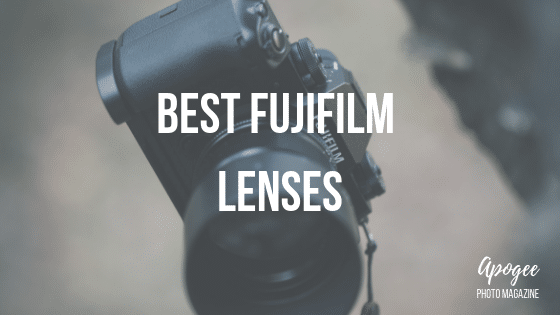 Fujifilm has taken the mirrorless world by storm by offering some of the only APS-C mirrorless cameras on the market (the other major player is Sony). APS-C sensors (Fujifilm sized 23.4 x 15.6 mm) are usually considered the best “happy medium” between full frame (35.0 x 24.0 mm) and micro 4/3rds (sized 17.3 x 13.0 mm) professional cameras. The cropped sensors keep the camera body and lens size light compared to full frame without sacrificing too much in terms of field of view and exposure.
Fujifilm has taken the mirrorless world by storm by offering some of the only APS-C mirrorless cameras on the market (the other major player is Sony). APS-C sensors (Fujifilm sized 23.4 x 15.6 mm) are usually considered the best “happy medium” between full frame (35.0 x 24.0 mm) and micro 4/3rds (sized 17.3 x 13.0 mm) professional cameras. The cropped sensors keep the camera body and lens size light compared to full frame without sacrificing too much in terms of field of view and exposure.
Fuji’s lens collection as a whole is much smaller than Nikon, Canon, or even Sony, let alone all of the third party support these three manufacturers enjoy. But as Fuji’s line of XF cameras continues to impress with their diverse and competitive array of features, it’s a good idea to get to know what sort of lenses Fuji has to offer. And since the market is more competitive than ever Fuji’s put together a selection of lenses that covers nearly everything a photographer could want at very reasonable prices.
Since Fuji mirrorless is still very new, you’re not going to find the dizzying array of legacy glass Canon and Nikon users have access to. Even a basic body like the Nikon D3400 can use 287 lenses natively! With Fuji, we have 33 native XF and XC lenses before third-party choices like Rokinon, Zeiss and Mitakon/ZY. So out of these lenses plus the third party options, how do I choose the right lens for me?
What Should I Be Looking For in a Fuji Lens?
Prime versus Zoom & Other Focal Length Issues
Ideally, you’ve decided on this before you’ve started shopping for lenses. Prime versus zoom is an age-old debate in photography, but it need not be (always). Really they each do two different things. Prime lenses are optimized for image quality at a specific focal length. A 50mm f/2.8 prime is generally going to outperform a 24-70mm f/2.8 at that particular focal length because of the optical compromises that zoom lenses have to make to be cost-effective.
Note that this does not always apply when the price is no object – while significantly more expensive than a similar prime lens the highest quality zoom lenses can more or less match a prime in image quality. In terms of cost-effectiveness; however, if there’s a specific focal length you prefer using more often than others a prime lens is a smart choice.
Any lens with a focal length 35mm is considered a wide angle field of view for a full frame camera. The lenses we’re discussing are meant for an APS-C body. Since APS-C is a cropped (smaller than full frame) sensor, this translates to any lens under 24mm. If you enjoy shooting landscapes or architecture then having a nice wide angle lens is essential.
35mm (50mm full-frame) is ideal for everything from portraits to events and much more because this is the range closest to the field of view offered by the human eye, so it’s great for your “daily lens.” Beyond that 50mm to around 80mm APS-C is great for portraits at a distance as well as event and nature photography, so long as your subjects aren’t overly shy.
Beyond that, you’re looking at birds, sports events like car races and other far away subjects. Incidentally, the longer the focal length, the more important image stabilization (OIS) is for your lens, see below.
OIS and other Acronyms
Like most camera manufacturers today Fujifilm adds a somewhat dizzying array of acronyms to the names of their lenses that probably aren’t immediately obvious unless you’re already invested in the system. OIS stands for Optical Image Stabilization, for example. Nikon prefers VR (Vibration Reduction), Canon uses IS (Image Stabilization), and Sony calls theirs OSS (Optical Steady Shot). Each one of these refers to a lens that has stabilizing elements within the glass to help reduce or negate motion blur due to shooting hand-held.
In the case of Fuji lenses, they use a precision gyro sensor which detects and corrects for motion that would affect the sharpness of the final image. According to Fuji, the OIS provides around 4 to 4.5 stops of stabilization. This means if I have to shoot at 1/2000th of a second to keep my image sharp without OIS I can instead shoot as slow as 1/125th of a second and have the same chance of motion blur. Note that if I violently shake the camera as I shoot no amount of OIS will be able to counteract that.
Likewise, when using shutter speeds slower than around 1/15th of a second, OIS is going to have a harder time since the sensor is simply exposed so long that OIS can’t keep up with the amount of blur going on. All of this is dependent on the shooting conditions. Some Fuji bodies also provide in-camera sensor stabilization, such as the X-H1. Bodies like these make OIS slightly less essential but as a whole OIS is very nice to have.
WR is another feature worth considering. Weather Resistance means that the lens is weather sealed to keep dust and moisture from getting into the elements. While some manufacturers are known to have some issues surrounding weatherization (Sony is notorious for this) Fuji lenses as a whole are pretty bulletproof.
The cost of WR lenses is definitely higher, especially on zoom lenses, which need to filter incoming air as the barrel changes shape to maintain their weatherization. But if you’re a landscape or outdoor event photographer, WR is an obvious choice to make. Keep in mind that the body should also be weatherized. If you’re shooting APS-C Fuji’s X series, like the newly released X-T3 and the X-H1, they provide a weatherized body that will pair nicely with a WR lens.
The final acronyms include PZ for Power Zoom, LM for Linear Motor, XF for (X-mount Fuji) and R for an aperture ring. LM is particularly useful for applications where the lens needs to pan and constantly move such as videography. And every lens reviewed here will be an XF lens; Fuji also makes GFX lenses for its medium format cameras and XC lenses which are budget models designed for the entry-level X-M1 and X-E1 mirrorless bodies.
Fuji or Third Party Lens?
The vast majority of third-party lenses made for Fuji are also manual focusing, including Mitakon/ZY, Rokinon, Kamlan, and several others. The Zeiss offerings do allow for autofocusing and provide the stellar sharpness and high-quality German engineering that Zeiss glass is known for.
Fuji’s third-party lenses are exclusively prime lenses as well. If you need a zoom lens, you’ll have to use any of the several excellent Fuji XF zoom lenses or buy a lens mount adapter to pair your X-mount camera to a Canon or Nikon lens. But keep in mind that mount adapters don’t allow autofocusing and image quality can occasionally suffer, depending on the mount design.
Best Fujifilm Zoom Lenses
Wide Angle Zoom: XF 10-24mm f/4 R OIS
The specifications on this lens are perfect for landscape and architectural photography. With the 1.53x crop factor, you’re looking at a 15mm full-frame equivalent lens at the widest. This is perfect for landscapes and real estate photography where you want to capture as much of a room as possible. Barrel distortion is common in wide angle lenses like this one; straight vertical or horizontal lines will tend to bend slightly. But the Fujifilm XF 10-24mm keeps barrel distortion down to an absolute minimum.
The f/4 aperture at first seems a bit disappointing since it’s fairly narrow and f/2.8 is relatively common in wide angle lenses. But photographers in need of a wide field of view generally want as much depth of field as possible. Unless you’re stacking multiple images together shooting with a shallow depth of field will not give you the sharpness and detail you want. The OIS is extremely helpful for hand-held shooting as well.
- Equivalent to 15-36 mm (35mm format) - angle of view: 110° - 61.2°
- Minimum working distance of 0.24 m, Focal Length : 10-24 mm
- Constant f:4 aperture throughout entire zoom range, OIS (built-in Optical Image Stabilisation)
- 14 elements in 10 groups (includes 4 aspherical and 4 extra low dispersion elements)
- Internal focussing and zoom - lens extension and length remains constant throughout zoom range
Everyday Shooter Zoom: XF 16-55mm f/2.8 R LM WR
If you had to choose a single zoom lens to add to your Fujifilm kit, you’d be hard pressed to do worse than the XF 16-55mm f/2.8. Factoring in the crop factor, you have a lens meant to replicate the classic 24-70mm f/2.8 combo that’s probably the best everyday lens you can own.
In terms of a generalist lens, it has an amazingly flexible focal range with a nice constant f/2.8 aperture that’s bright enough for good exposure and autofocus when the lighting is challenging, a shallow depth of field when needed, yet not so open that it gets too expensive to build into a zoom lens.
As a WR lens, it’s also weather resistant; which is another great quality for a lens that will rarely leave the front of your camera. Why it doesn’t have OIS is a bit of a mystery given the price and its place as your everyday lens, but with the nice bright aperture most of the time you’ll be able to choose a high enough shutter speed to mitigate motion blur.
- Optically designed to draw out the maximum image quality of a flagship standard zoom lens Angle of view 83 2°- 29°
- Focal length(35mm format equivalent) f=16-55mm (24-84mm) Focus range Normal - 0 6m - ∞(whole zoom position) Macro - 30cm - 10m (Wide) 40cm - 10m (Telephoto)
- High-speed quiet auto focus thanks to the Linear Motor Weight excluding caps and hoods 1 44 pounds(655g)
- Weather resistant design with 14 sealing points dust-resistant and -10 Degree low-temperature operation
- Nano-gi coating technology 9 rounded blade aperture diaphragm help create smooth and circular bokeh Max Magnification 0 16x (telephoto)
Honorable Mention Everyday Shooter Zoom: XF 18-55mm f/2.8-4 R LM OIS
At almost half the price, the XF 18-55mm f/2.8-4 is worth considering as well, either on its own or as a kit lens for several X-series cameras. While the focal range is nearly identical, the maximum aperture narrows the more you increase the focal length. At 55mm f/4 you lose an entire stop of exposure compared to the f/2.8 model. Also, focal length matters quite a bit more the wider the lens becomes. 16mm is noticeably wider compared to 18mm – unlike 105 vs. 107mm on a telephoto.
Still, if you don’t need that much wide-angle view and you don’t mind the loss in exposure and depth of field at 55mm, and don’t mind losing weather sealing in exchange for optical image stabilization, which the much more expensive f/2.8 model strangely does not have, this lens is a strong contender for the second best walk around lens.
- 18-55mm f:2.8 - 4.0 OIS (27 - 84mm equivalent)
- 14 Elements in 10 groups (inc. 3 aspherical & 1 extra low dispersion Elements)
- Angle of View: 76.5 - 29 Degrees
- Filter Size: 58mm. Focus range-Normal- Approx. 0.6m - ∞ (whole zoom position). Macro- Wide: 30cm - 10m, Telephoto: 40cm - 10m
- Aperture control : Number of blades 7 (rounded diaphragm opening)
Telephoto Zoom: XF 50-140mm f/2.8 LM OIS WR
As one of the pricier additions to the XF collection, this lens remains inexpensive compared to some of the higher end offerings by other manufacturers. The vast amount of reach offered by the XF 50-140mm f/2.8 (75-214mm full frame equivalent) focal range is perfect for photographers looking to shoot anything from portraits and weddings to events and nature photography. Like the previous lens, the 70-200mm f/2.8 is a classic combination meant to shoot everything the 24-70mm can’t quite reach.
The OIS motor of this lens is essential because longer focal lengths make hand shake worse. Sharpness is excellent across the frame, and the constant f/2.8 aperture keeps exposure constant and bright. And we have weather sealing in case of rain or wind carried moisture and dust. In short, this is an incredibly versatile lens that belongs in nearly any photographer’s arsenal.
- Equivalent to 76mm to 214mm;Internal focus
- Focal Length : 50-140 mm
- Focus range : Normal : 1m - ∞ (whole zoom position), Macro : 1m - 3m (whole zoom position)
- Max. magnification : 0.12x (Telephoto), Maximum aperture of F2.8
- Dust / water and low temperature resistance
Third-party Zoom Offering: None!
Fuji has several manufacturers that offer third-party lenses, but every single one is a prime lens. Most of the zoom manufacturers like Sigma and Tamron are sticking to building exclusively for Canon, Nikon, and Sony.
Best Fujifilm Prime Lenses
Everyday Shooter Prime: XF 35mm f/1.4
Photographers looking for a 50mm equivalent will find that the Fuji XF 35mm f/1.4 is one of the best lenses you can have in your bag. Even wide open, it manages to provide great corner to corner sharpness and given how fast the shutter speed of mirrorless cameras goes (up to 1/32,000ths of a second using the e-shutter) a wide open aperture can even be used during the brightest days.
The amount of light f/1.4 lets in also makes it a fantastic low-light lens; street, wedding and event photographers will find this quality useful as it allows you to use natural light without disturbing the ambiance with a flash unit. This lens can focus on subjects as close as 28 cm and out to infinity. While it faces strong competition from the 35mm f/2 R WR its worth noting the f/1.4 model is slightly sharper throughout the frame past f/2.
- Focal length (35mm format equivalent) f=35mm (53mm)
- 8 Elements in 6 Groups (Inc. 1 Asph. Element)
- Angle of view - 44.2 Degrees. Number of blades 7(rounded diaphragm opening)
- Filter Size 52mm
- Focus range : Normal 0.8m - ∞, Macro 28cm - 2.0m. Max. magnification 0.17x
Honorable Mention Everyday Shooter Prime: XF 35mm F/2 R WR
The aperture of the is a full stop slower compared to the f/1.4. f/2 is still a wonderfully bright (fast) aperture that will give great depth of field and exposure in most settings, but portrait photographers will really appreciate the extra exposure and shallower depth of field of the f/1.4 version.
However, the weather resistance of the f/2 model makes it an excellent choice for outdoor portrait and event photographers. The f/2 is also significantly cheaper and lighter than the 35mm f/1.4 (184 g vs. 165 g). Lastly, the minimum focal range is slightly further away (35 cm).
- Weather resistant design with 8 sealing points for weather and dust resistance and operation as low as 14 Degree
- Inner focus system with 0.08 seconds autofocus speed and nearly silent operation. Focal length : 35 millimeter (35 millimeter format equivalent : 53 millimeter)
- Nano GI coating reduces ghosting and flare
- 9 blade aperture creates smooth and circular bokeh
- Minimum working distance of approximately 13 inches.Max. magnification:0.17x.Angle of view:44.2 degree
Portrait/Macro Prime: XF 60mm f/2.4 R Macro
This lens is incredibly versatile due to its use as both a portrait and a macro lens. As a 90mm equivalent, the Fujifilm XF 60mm f/2.4 has excellent reach for shooting portraits at a distance. Also, f/2.4 is a very bright aperture that will give great depth of field and exposure even in low light settings.
The main criticism of this lens is that it’s not a “true macro.” True macro lenses offer 1:1 magnification; what’s projected onto the sensor is life-sized on a 1:1 lens. This is a 1:2 lens, so it has 50% life sized magnification. But considering most non-macro lenses do significantly worse than this the XF 60mm is an excellent macro lens that doubles as a portrait shooter.
Fuji’s 56mm f/1.2 is much brighter, exposure wise, but about 50% more expensive. The portrait depth of field is much better on the 56mm, but you lose out on the macro capacity of the 60mm f/2.4. Either lens is a great choice, however.
If your budget is a bit higherm the XF 80mm f/2.8 R LM OIS WR is an even better choice as not only does it provide weather sealing and optical image stabilization but its also a true 1:1 macro lens. At 140mm equivalent focal length it’s less useful as a portrait lens unless you have plenty of distance to work with or are shooting candid. But as a pure macro lens, it’s far better than the 60mm f/2.8 R.
- 60mm F2.4 Macro Lens (90mm Equivalent)
- 10 Elements in 8 Groups (Inc. 1 Asph. Element & 1 abnormal disp. element)
- Angle of view - 26.6 Degrees
- Filter Size 39mm
Telephoto Prime: XF 200mm F/2 R LM OIS WR
With an equivalent full frame reach of 305mm, the is the lens for photographers looking for action at nearly any distance. F/2 is a very wide open aperture that will provide a very nice depth of field, and it has the full complement of aperture ring (R), Linear Motor, image stabilization, and weatherization. This lens offers five stops of IS that’s automatically applied to best suit each shooting environment.
The focal range selector speeds up autofocusing by narrowing the camera’s search to a preset distance. Included with the lens is an XF 1.4X teleconverter which preserves the maximum f/2 aperture while increasing the focal length to 427mm full frame equivalent. While the lens + teleconverter combination is far from cheap, it’s easily the best telephoto prime Fujifilm has to offer in terms of sheer capacity.
- Equivalent to 300mm (35mm)
- 19 elements in 14 groups, including one large-diameter Super ED Lens element and two large-diameter ED Lens elements to minimize chromatic aberration
- New Focus Preset function that instantaneously changes the focus to a preset position, enabling photographers to capture the main subject with ease, and without having to make focal readjustments.
- Utilizing linear motors, the XF200mmF2 R LM OIS WR achieves fast, near silent and high-precision AF performance
- The Lens offers 5-stop image stabilization performance and is sealed at 17 points and designed to be weather and Dust-Resistant and to operate in temperatures as low as 14 Degree/-10 Degree.
Third-Party Prime Offering: Zhongyi Mitakon 35mm f/0.95 Mark II
This is an extremely popular yet controversial lens. The Zhongyi Mitakon 35mm f/0.95 is controversial because it’s a manual focusing lens that isn’t super expensive but isn’t especially cheap, either. F/0.95 is extremely wide open and very few lenses offer this narrow a depth of field. But because it’s fully manual focusing hitting proper focus can be a bit of a challenge.
Many modern digital cameras, including Fujifilm’s X-line, offer focus peaking, which colors a swatch of the scene in the electronic viewfinder to correspond with where the image is in focus. While it takes slightly longer compared to autofocus, it’s still not terribly difficult to use.
As stated earlier 35mm is a great walk around focal length. While the Mitakon isn’t as sharp as it could be at maximum aperture and chromatic aberrations are an issue there’s no doubt that this is an immensely fun lens to use due to the challenging nature of manual focus and how thin the depth of field gets. It is absolutely one of the best budget street photography lenses out there for the Fuji X-series.
- 1 Year Warranty
- Brand: Mitakon
- Lens Series: None
- Color: Black
- Lens Type: Standard
Conclusion
Fujifilm’s collection of lenses is small but well balanced. It covers every area of photography you’ll commonly shoot. Wide-angle to telephoto primes and zoom lenses in most ranges are well covered with both wide open yet pricier maximum apertures and budget-friendly selections that constrict with the focal length. Sharpness is generally a strength of Fuji’s native lenses with issues like barrel distortion and chromatic aberration minimized, regardless of the price of the lens.
Fuji’s third-party options are generous but restricted to prime lenses with odd apertures like the Mitakon f/0.95 and Venus Optics’ 5x superzoom. Rokinon makes a series of great manual focusing prime lenses that cover everything from wide-angle to telephoto that are worth looking at. But you’re simply not going to have the lens selection of a Canon or Nikon body because Fuji’s X-series is much newer. Still, paired with the right camera body you’re not going to be disappointed in terms of image quality no matter what lenses you go with.







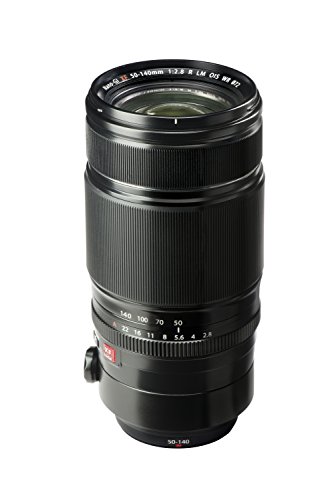



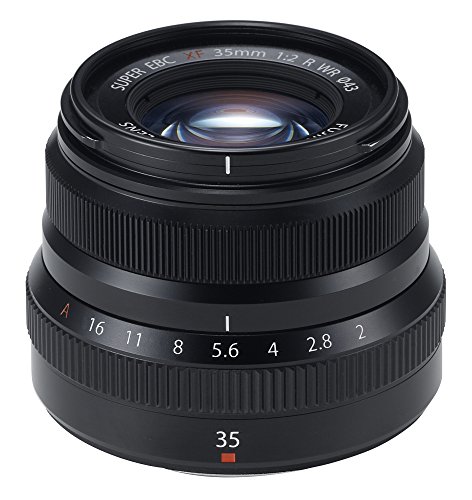





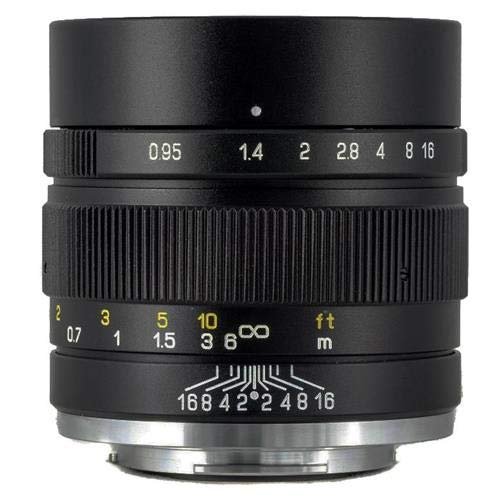

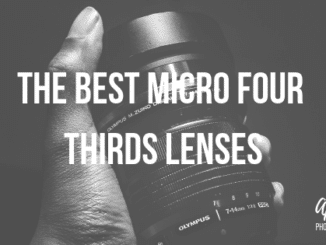

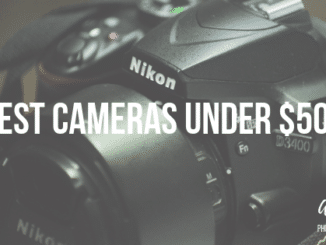
Leave a Reply